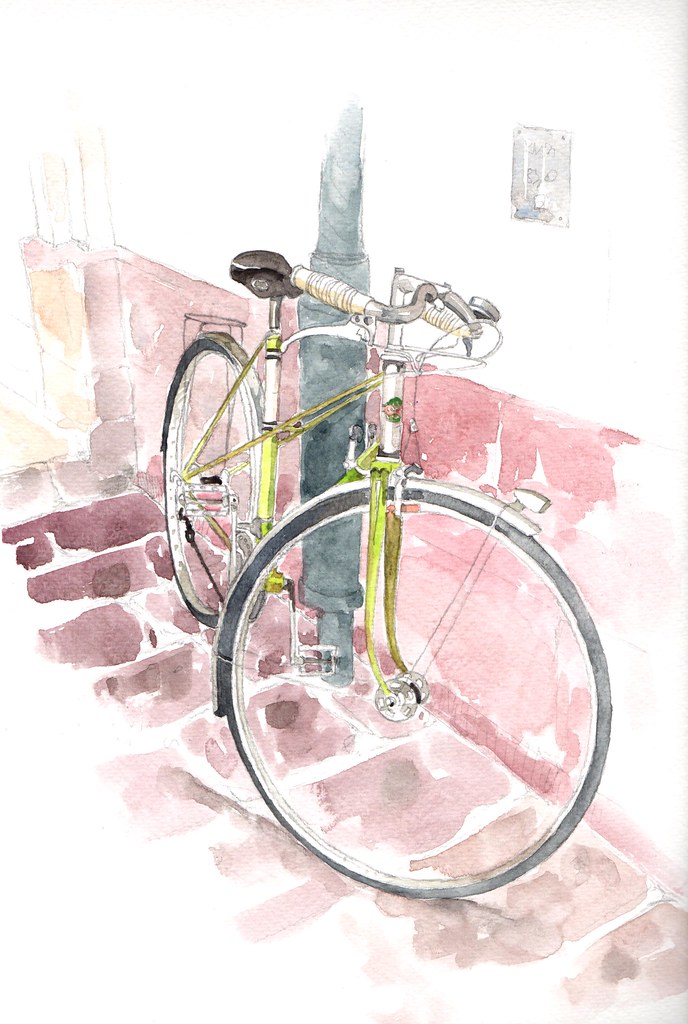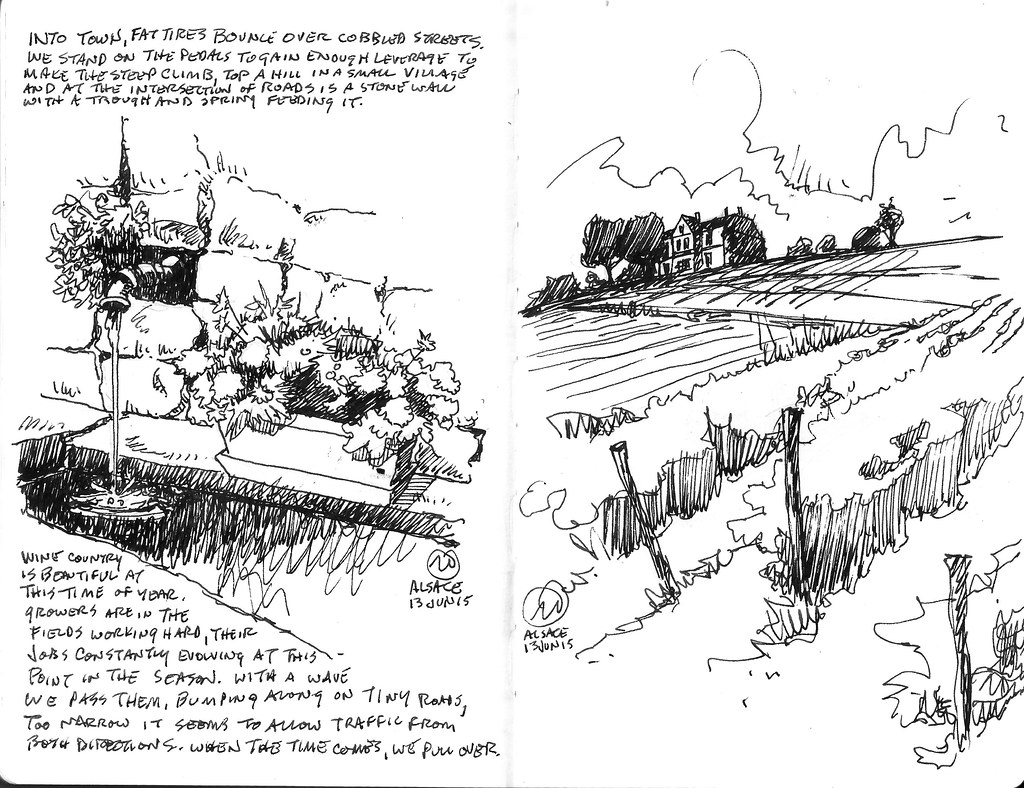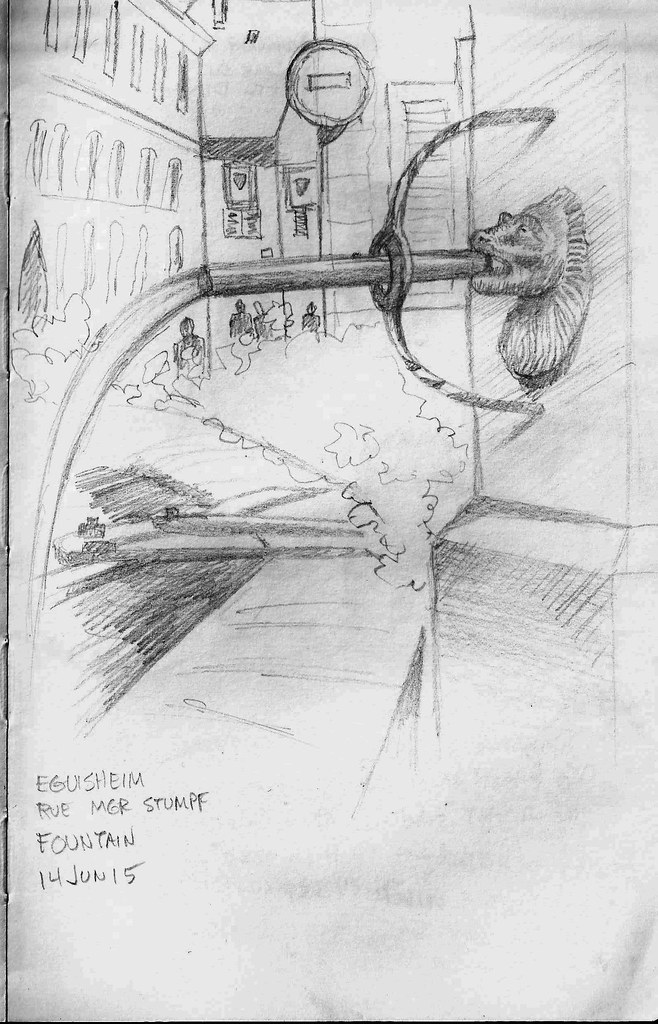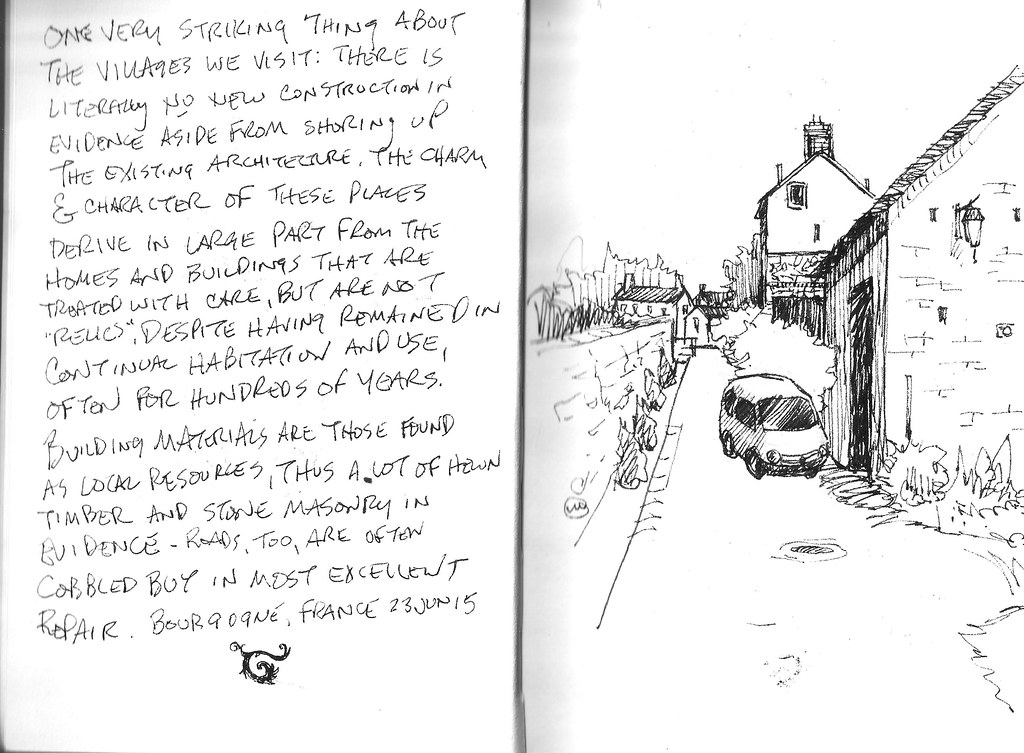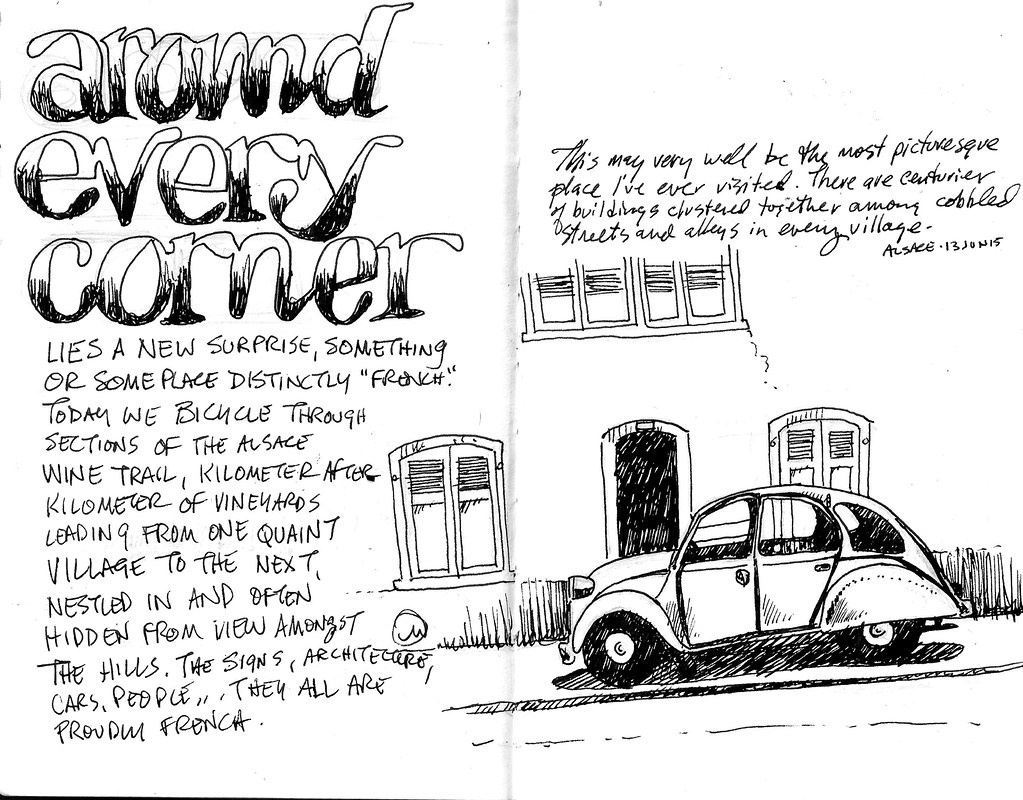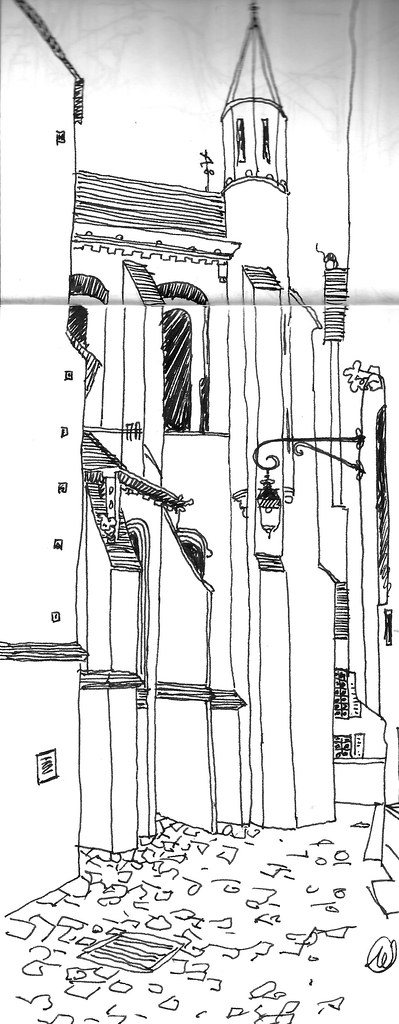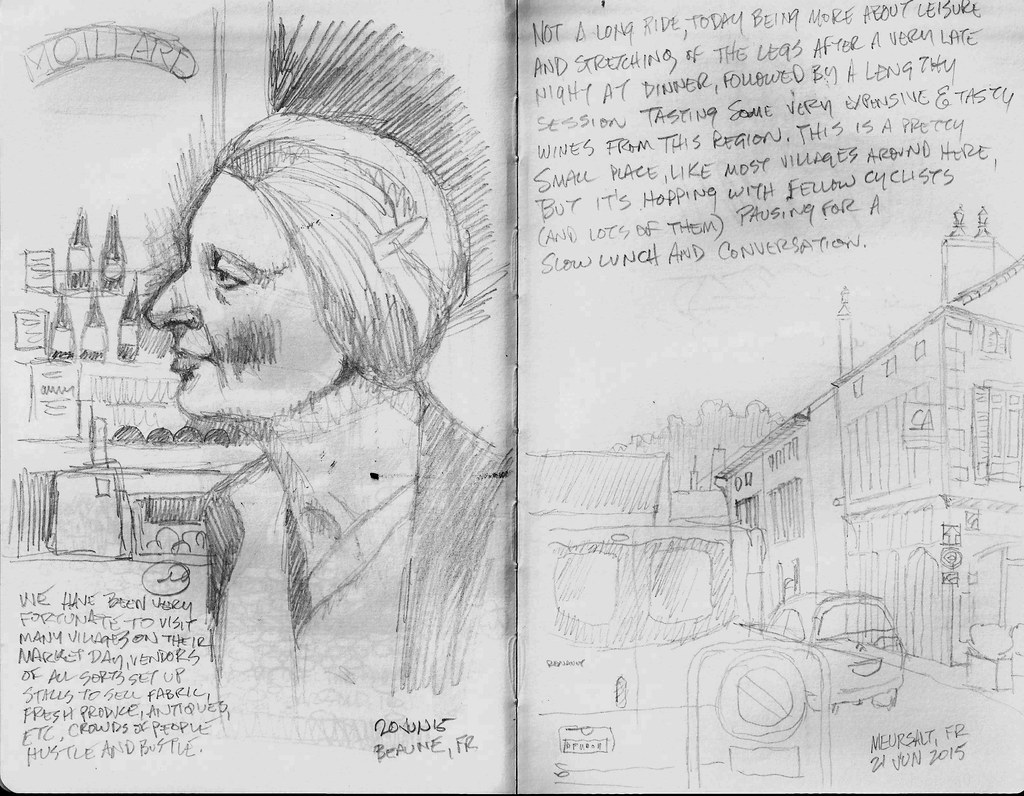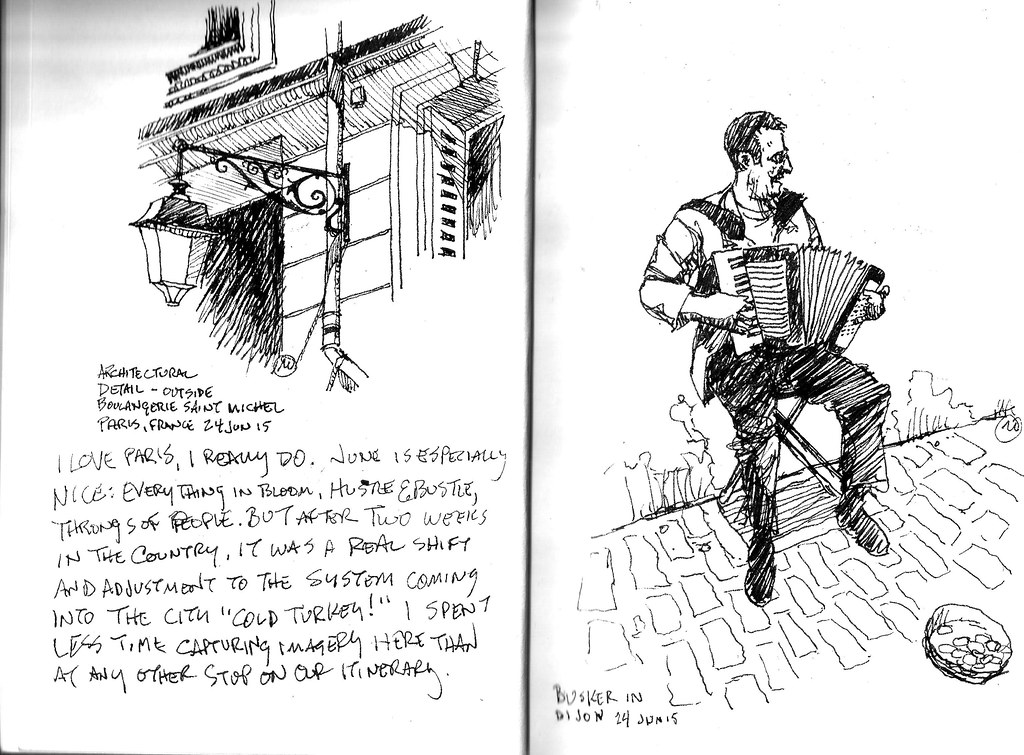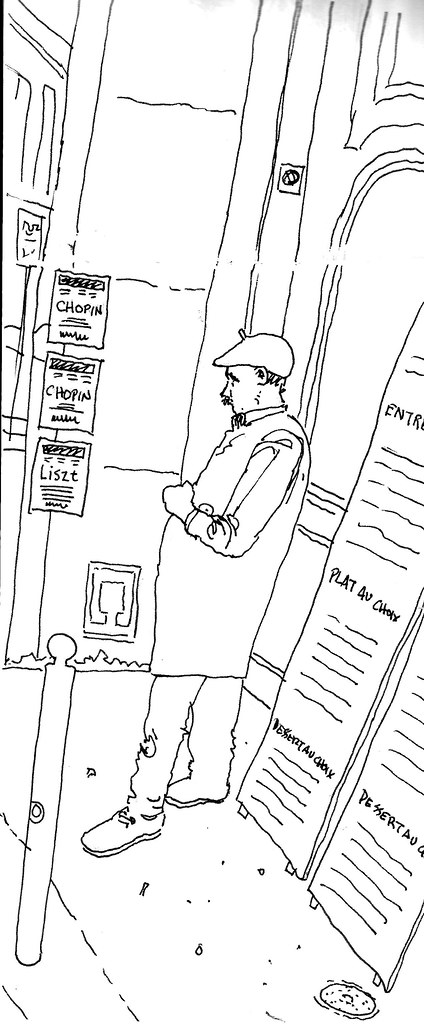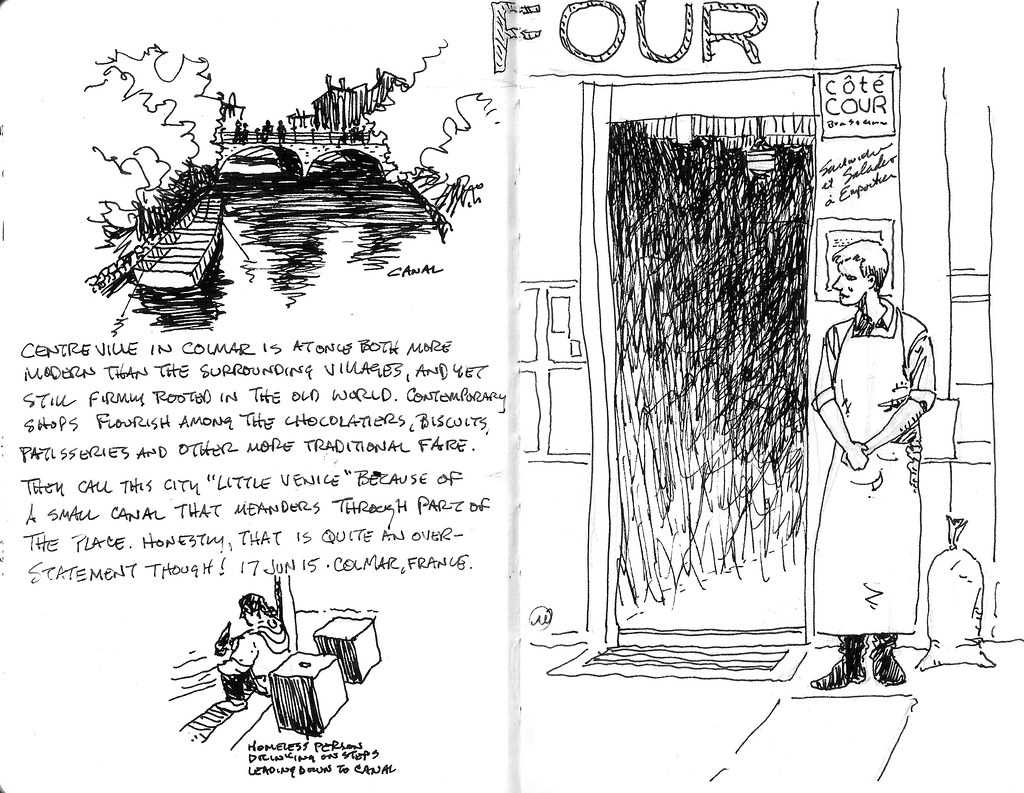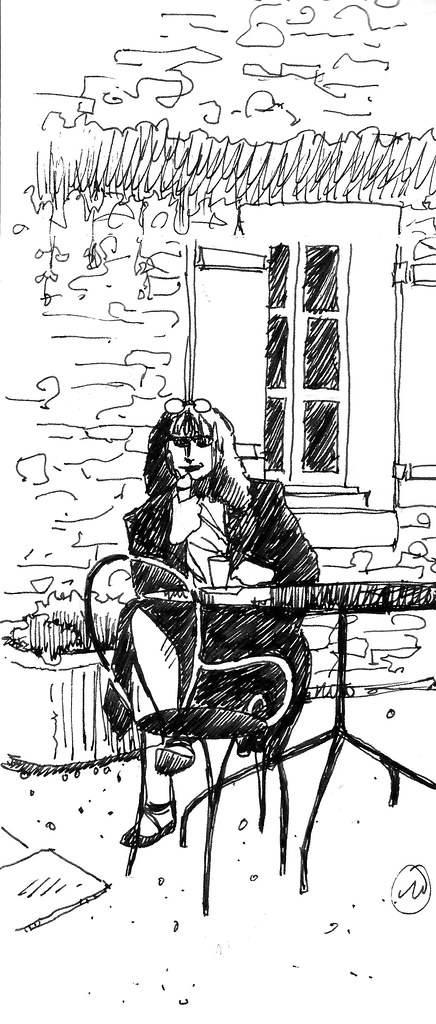
16 July, 2015. Every once in a while I’ll remember to capture the steps I go through in developing a sketch. I think it can be instructive to see how things come together. Presented here are the stages of sketching I’d planned to share with the participants of an urban sketching workshop I taught earlier this week. (Naturally enough, I completely forgot to share these at all!)
I often think of sketch development as three stages, the first being a rough pencil as pictured above. I keep the shapes general and usually quite a bit looser than in this example. This allows me to continue making decisions in the later stages of development.


I really look forward to the second stage, which is when I begin to ink. I like to use this stage to freely draw the lines, to make decisions about what to include and what to leave out. This is also the time I will usually add any narrative that I wish included.

Color is the final stage – presuming I don’t leave the sketch alone as a black and white scribble. More and more I’m keeping the color simple and experimenting with splashes, blooms, and other loosely expressive blobs of pigment.

Other than demonstrating techniques, I often don’t get too much opportunity to actually do any sketching myself when I teach. This sketch was developed later on, after participants had been released to work on their own.
The workshop I’m teaching is a grad course at the Kansas City Art Institute specifically for art teachers. On the first of three days we focused on capturing people in motion. I introduced single and multiple line gesture sketch strategies along with the idea of composite figures. Thinking in terms of composite figures is a good way to avoid the frustration of people moving in and out of one’s vision too quickly, which is all to often the case when sketching on the street. Instead of focusing on one figure, the artist can combine observations of multiple figures to create one single believable figure. Although hotter than hell, participants took these ideas and worked on their own to create more comprehensively organized drawings. As usual, the first day of a new concept or approach to drawing is one that requires some confidence building strategies.
My three day workshop is divided into three areas of focus. On the first day we use the figure as a starting point to develop gestural sketches. On the second day we look at more static architectural elements. And on the third day we introduce ideas about color, which also seems to be a good time to look at foliage. Throughout it all I like to remind participants that we’re looking for a way to create a sense of place, a sense of being in, and of, a moment.

After an incredibly hot outing the first day and an equally miserable forecast for the second, we were pleasantly surprised with a cool morning breeze and cloud cover. It did nothing to alleviate the humidity, but 84 degrees beats the hell out of 100! Working at the City Market, participants enjoyed the break in weather, as well as ample seating and a subject that remained motionless.

For the third and final day, we visited a park in downtown that is located on bluffs overlooking the industrial West Bottoms, the river, and a wonderful historic residential area.

On day two I made a rough pencil of this road crew worker. I held off adding color so that I could use it to demonstrate application of watercolor wash to kick off the morning of our final day.

One nasty little surprise was discovered as I began the color demonstration. Opening my small watercolor sketchbook I found that the bottle of water in my bag had leaked and completely soaked the entire book. The sketches, other than being wrinkled, were undamaged, but I did have to take the book apart page by page, leaving them to dry out in the back of my car. Ugh.

